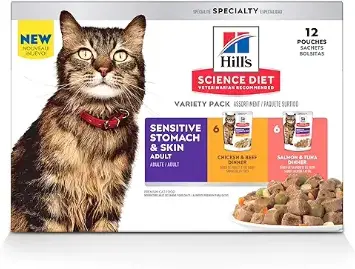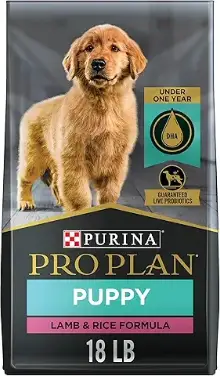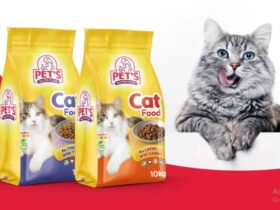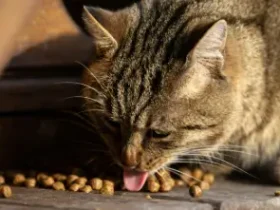Best Cat Food for Sensitive Stomachs
Introduction
The best cat food for sensitive stomachs Choosing the correct diet for your cat can be difficult, particularly if they have a sensitive stomach. Issues like vomiting, diarrhea, or appetite loss can result from cats’ sensitive stomachs, which can be stressful for both you and your pet. concentrating on canned foods that are best suited for cats living indoors..
Description
Cats with sensitive stomachs require special diets that support their digestive health. These diets often include limited ingredients to reduce the risk of food sensitivities or allergies. High-quality protein sources, such as chicken or turkey, are usually preferred. Additionally, the inclusion of fiber-rich ingredients like pumpkin or prebiotics can help regulate digestion.
Canned cat food is a popular choice for indoor cats with sensitive stomachs because it is often easier to digest than dry food and provides additional hydration, which is crucial for cats. The moisture content in canned food supports urinary tract health and ensures your cat remains well-hydrated, reducing the risk of further gastrointestinal issues. When choosing canned food, look for options labeled as grain-free, containing probiotics, or made with easily digestible proteins.
In this guide, we’ll highlight:
- Key features to look for in canned cat food.
- Detailed reviews of top products designed for sensitive stomachs.
- Tips for transitioning your cat to a new diet to avoid digestive upset.
By the end of this article, you’ll have the knowledge needed to make an informed decision and ensure your cat stays healthy and happy.
Way to Best Canned Cat Food for Indoor Cats
Finding the best canned cat food for indoor cats with sensitive stomachs involves careful consideration of several factors. Here’s a step-by-step approach:
- Check the Ingredient List: Look for limited ingredients and high-quality proteins. Avoid artificial colors, flavors, and preservatives.
- Consider Your Cat’s Specific Needs: Some cats may benefit from grain-free diets, while others might need added fiber or probiotics.
- Evaluate the Nutritional Value: Ensure the food meets the nutritional standards set by the Association of American Feed Control Officials (AAFCO).
- Look for Moisture Content: Indoor cats often drink less water, so canned food with high moisture content is beneficial.
- Consult Your Veterinarian: A professional can help you understand your cat’s specific dietary needs.
How Do You Best Canned Cat Food for Indoor Cats?
Transitioning your cat to the best canned food for indoor cats requires patience and strategy:
- Start Gradually: Mix the new food with the old food in small amounts, gradually increasing the proportion of the new food over 7-10 days.
- Monitor Your Cat’s Reaction: Watch for signs of improved digestion or any adverse reactions such as vomiting or diarrhea.
- Stick to a Feeding Schedule: Regular feeding times can help stabilize your cat’s digestion.
- Provide Fresh Water: Ensure your cat has access to fresh water at all times to complement the hydration from canned food.
Product Reviews
Product 01: Hill’s Science Diet Sensitive Stomach & Skin Canned Cat Food
- Intro: A vet-recommended formula designed for cats with sensitive stomachs and skin.
- Technical Information: Contains prebiotic fiber, easily digestible ingredients, and omega-6 fatty acids.
- Pros & Cons:
Pros: Promotes digestive health, improves skin and coat condition.
Cons: Premium price point.

- Specification: Comes in 2.9 oz and 5.5 oz cans, chicken as the main protein source.
- Good thing about the product: High digestibility and dual benefits for skin and stomach.
Product 02: Purina Pro Plan Focus Sensitive Skin & Stomach
- Intro: A budget-friendly option tailored for cats with sensitive digestion.
- Technical Information: Features turkey as the main ingredient, fortified with antioxidants and prebiotics.
- Pros & Cons:
- Pros: Affordable, great for fussy eaters.
- Cons: Contains carrageenan.

- Specification: Grain-free formula available in 3 oz cans.
- Good thing about the product: Combines quality and affordability.
Product 03: Blue Buffalo Basics Limited Ingredient Wet Food
- Intro: A limited-ingredient formula ideal for food-sensitive cats.
- Technical Information: Contains turkey and pumpkin for digestive support.
- Pros & Cons:
- Pros: No artificial additives, grain-free.
- Cons: Slightly lower protein content.

- Specification: Available in 3 oz and 5.5 oz cans.
- Good thing about the product: Gentle on sensitive stomachs and supports regular digestion.
Conclusion
It’s crucial to carefully analyze the ingredients, nutritional value, above all your cat’s tastes when selecting canned food for an indoor cat with a sensitive stomach. You may promote your feline’s digestive health and overall wellbeing by choosing high-quality products like Purina Pro Plan, Hill’s Science Diet, or Blue Buffalo Basics. Additionally, you should always consult your veterinarian before making any major nutritional modifications. This guarantees a seamless transition that is customized to your cat’s unique requirements, eventually fostering a happier and healthier life for your pet.
FAQ
- What are the signs of a sensitive stomach in cats? Common signs include vomiting, diarrhea, excessive gas, and loss of appetite.
- How can I transition my cat to a new food? Gradually mix the new food with the old food over 7-10 days to avoid digestive upset.
- Is canned food better for sensitive stomachs than dry food? Yes, canned food is generally easier to digest and provides additional hydration, which is beneficial for cats with sensitive stomachs.
Can I feed my cat human food for a sensitive stomach? It’s best to stick with specially formulated cat food to meet your cat’s nutritional needs.





Leave a Reply